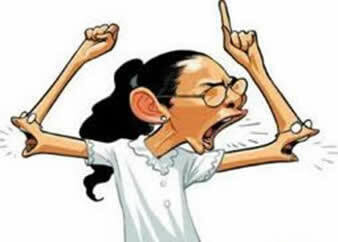THE description and the textual typology whose function is characterize beings and objects. It is fundamental for the Communication human, as it is through the descriptions that define or if you specify the various elements of the world. Several textual genres, such as the novel, the novel, the news, among others, have descriptive excerpts as fundamental in their structures. In a way, it is possible to say that there are two types of description: the objective and the subjective.
Characteristics of objective description
It can be defined as one that represents reality as it is, that is, without the influence of the feelings or thoughts of the one who writes.
The Realism literary movement is famous for having as one of its banners the exaltation of objective descriptions.
In several everyday texts — such as the “technical specifications of a product” or even the “descriptive memorial of the property lease contract” — objective descriptions must be used.
Usually, a description that is intended to be objective tends to avoid using the first person of the speech.
Characteristics of the subjective description
It can be defined as the one in which the author's opinions, perspectives and feelings explicitly interfere in the descriptive process.
A literary movement that exalted subjective descriptions was the Romanticism.
In everyday life, we produce several subjective descriptions, when, for example, we explain the taste of a food we like a lot: “This sandwich is a comfort for my belly!”
The use of the first person singular, represented by the pronoun “I”, is common in texts whose descriptions tend to be subjective.
Read too: How to write a narrative text?
Examples
See, below, examples of objective and subjective descriptive excerpts:
Text 01
The Inhotim Institute began to be conceived by Bernardo de Mello Paz, a businessman from Minas Gerais, in the mid-1980s. Private property has transformed over time, becoming a unique place, with one of the most relevant contemporary art collections around the world and a botanical collection that brings together rare and all species continents. The collections are mobilized for the development of educational and social activities for audiences of different age groups. Inhotim, an Oscip (Civil Society Organization of Public Interest), has also built several areas of dialogue with the surrounding community. With a multidisciplinary approach, Inhotim consolidates itself, every day, as a driving agent of sustainable human development.
(Inhotim Institute)
In this text, it is possible to identify a main function: describe what the Inhotim Institute is. For this, the author did not write his impressions of the place, but presented hard facts about space. This is noticeable in excerpts such as “[a place] with one of the most relevant collections of contemporary art in the world and a botanical collection that brings together rare species from all continents”.
Read too: Injunctive texts and prescriptive texts
Text 02
Our father was a dutiful, orderly, positive man; and it has been that way from a young man and a boy, as witnessed by the various sensible people, when I inquired about the information. As far as I remember, he didn't look more stupid or sadder than the others we knew. Just quiet. Our mother was the ruler, and she scolded us in the diary—my sister, my brother, and me. But it so happened that one day our father had a canoe made for himself.
It was for real. He ordered the special canoe, made of wood, small, barely with the stern board, as if to fit just the oarsman. But it had to be all made, chosen strong and arched hard, fit to last in the water for twenty or thirty years. Our mother swore very much against the idea. Could it be that he, who did not wander in these arts, was going to propose himself now to fishing and hunting? Our father didn't say anything. Our house, at that time, was even closer to the river, a work of not even a quarter of a league: the river stretching out wide, deep, silent as ever. Wide, from not being able to see the shape of the other edge. And I can't forget the day the canoe was finished.
In: GUIMARÃES, R. the third bank of the river.
At the beginning of the story by Guimarães Rosa, it is possible to find the father's description of the narrator, as well as the attitude that this one had taken: build a boat. THE eyesight that the son has from the father is marked by the personal affective memory and of the community who lived—“Our father was a man who was observant, orderly, positive; and it has been that way since a young man and a boy, as witnessed by the various sensible people, when I inquired about the information.”
Take the opportunity to check out our video lesson related to the subject:


